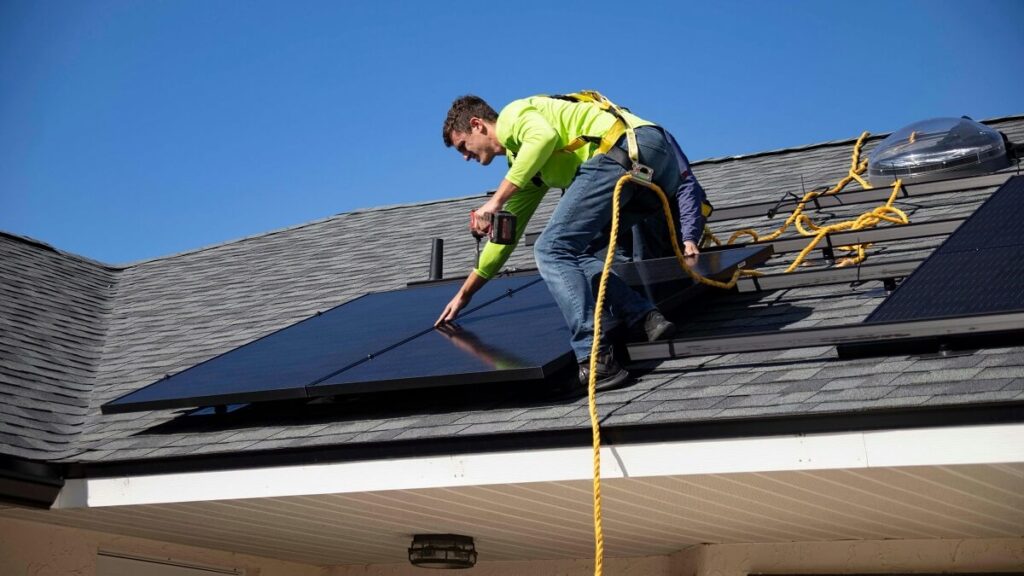When working with roofing contractors in Arkansas, you may encounter specialized terms and jargon specific to the industry. Understanding these terms can help you communicate more effectively with your contractor and make informed decisions about your roofing project. Here are some key terms and words commonly used by Arkansas roofing contractors.
Shingle Types and Styles
Shingles are the most visible part of your roof, and understanding the different types and styles is crucial. Asphalt shingles are the most common type, known for their affordability and ease of installation. They come in two primary styles: three-tab and architectural. Three-tab shingles are flat and uniform, creating a smooth, traditional look. Architectural shingles, also known as dimensional or laminated shingles, have a layered appearance that adds depth and texture to the roof.
Other shingle materials include wood, metal, and slate. Wood shingles, or shakes, offer a natural, rustic look and are typically made from cedar. Metal shingles are durable and energy-efficient, often made from aluminum or steel. Slate shingles are one of the most durable options, offering a high-end appearance and long lifespan.
Roofing Underlayment
Beneath the shingles lies the underlayment, a crucial component of any roofing system. The underlayment provides an additional layer of protection against water infiltration, safeguarding the roof deck from moisture damage. There are different types of underlayment, including asphalt-saturated felt, synthetic underlayment, and rubberized asphalt. Asphalt-saturated felt, also known as tar paper, is the traditional choice, providing basic protection at an affordable cost.
Synthetic underlayment, made from polyethylene or polypropylene, offers superior durability and resistance to tearing. It is lightweight and easier to install, making it a popular choice among modern roofing contractors. Rubberized asphalt underlayment is another option, providing the highest level of waterproofing due to its self-adhering properties.
Flashing and Drip Edge
Flashing and drip edge are critical components that protect vulnerable areas of the roof from water damage. Flashing is typically made of metal and is used to seal and protect joints, such as where the roof meets a chimney, vent, or skylight. It directs water away from these joints, preventing leaks and water damage. Flashing comes in various forms, including step flashing, counter flashing, and valley flashing, each serving a specific purpose in different areas of the roof.
Drip edge, on the other hand, is a metal strip installed along the edges of the roof. Its primary function is to prevent water from seeping under the roofing material. Drip edges also provide support to the roofing material and enhance the overall durability of the roof.
Roofing Ventilation
Proper ventilation is crucial for maintaining the health and longevity of a roofing system. Roofing ventilation allows air to circulate through the attic, reducing heat buildup and moisture accumulation. There are several types of ventilation systems used by roofing contractors, including ridge vents, soffit vents, and gable vents. They are often used in combination with soffit vents, which are installed under the eaves and allow cool air to enter the attic.
Ventilation options include gable vents, turbine vents and powered attic fans, which actively move air out of the attic. Proper ventilation extends the lifespan of the roofing materials and improves energy efficiency. Here are some common terms related to roofing ventilation:
- Ridge Vent – A continuous vent installed at the peak of the roof to allow hot air to escape.
- Soffit Vent – Vents installed under the eaves to allow cool air to enter the attic.
- Gable Vent – Vents located on the gable ends of the house for attic ventilation.
- Turbine Vent – A wind-powered vent that helps exhaust hot air from the attic.
- Powered Attic Fan – An electric fan used to actively ventilate the attic space.
Roof Deck and Sheathing
The roof deck, also known as sheathing, is the structural foundation of the roofing system. It is typically made of plywood or oriented strand board (OSB) and provides a solid base for the roofing materials. The roof deck must be properly installed and maintained to ensure the overall integrity of the roof. Any damage to the roof deck can compromise the entire roofing system, leading to leaks and structural issues.
During a roofing project, contractors may inspect the roof deck for signs of damage or rot. If necessary, they will replace any damaged sections to ensure a solid foundation for the new roofing materials. Understanding the importance of the roof deck helps homeowners appreciate the need for thorough inspections and repairs as part of their roofing project.
Roof Pitch and Slope
Roof pitch and slope are important factors that influence the design and performance of a roofing system. The pitch of a roof is the angle or steepness of the roof, typically expressed as a ratio of the rise (vertical height) to the run (horizontal distance). A steeper pitch allows for better water runoff and can provide additional attic space, but it may also be more challenging and expensive to install.
Slope is another term used to describe the angle of the roof, often measured in degrees. Both pitch and slope affect the choice of roofing materials and the overall design of the roof. For example, flat or low-slope roofs require different materials and techniques compared to steeply pitched roofs.
Roofing Warranties and Guarantees
Warranties can vary widely in terms of coverage and duration, so it is essential to review them carefully. There are typically two types of warranties: manufacturer warranties and workmanship warranties. Manufacturer warranties cover defects in the roofing materials, while Peak Roofing warranties cover installation errors and labor.
Some warranties may also offer coverage for specific issues such as wind damage, algae growth, or leaks. Understanding the terms and conditions of the warranties helps homeowners make informed decisions and ensures they are protected in the event of any issues with their new roof.
Understanding the specialized terms and words used by Arkansas roofing contractors can help homeowners communicate more effectively with their contractors and make informed decisions about their roofing projects. By working with knowledgeable and experienced roofing contractors, homeowners can achieve a durable, efficient, and aesthetically pleasing roofing system that enhances the value of their home.
Peak Roofing & Exteriors
If you’re looking for an honest and experienced roofing contractor that can handle your home or business roofing needs in Northwest Arkansas, Northern Louisiana, or West Texas, look no further. Peak Roofing & Exteriors will deliver with quality and integrity. Contact us today and book your FREE inspection!

